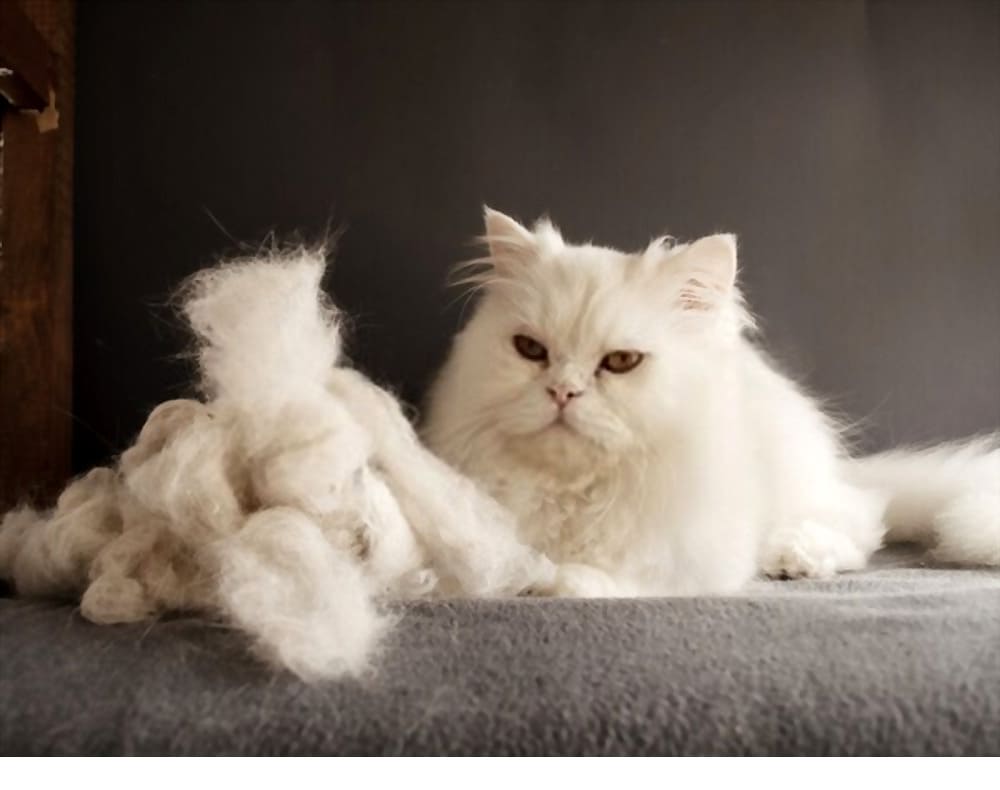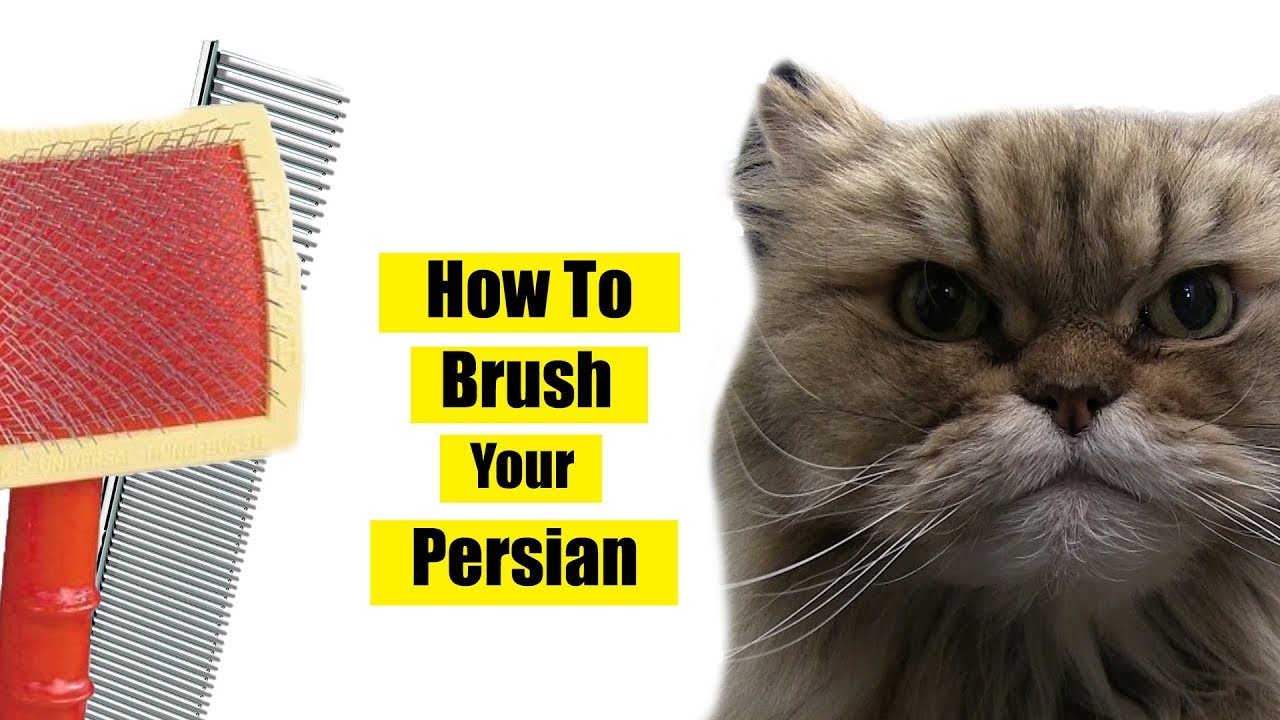The Art of Brushing Your Persian Cat’s Coat is an informative article dedicated to helping Persian cat owners understand the importance of proper grooming and maintenance. From the website “persiancatdude.com”, this blog post aims to provide readers with reliable information and engaging content about the subject. With a focus on resonating with the interests of the audience, this post delves into the various aspects of brushing a Persian cat’s coat, highlighting best practices and techniques. For every article, the post concludes with ten frequently asked questions about Persian cats, providing readers with valuable insights and knowledge.
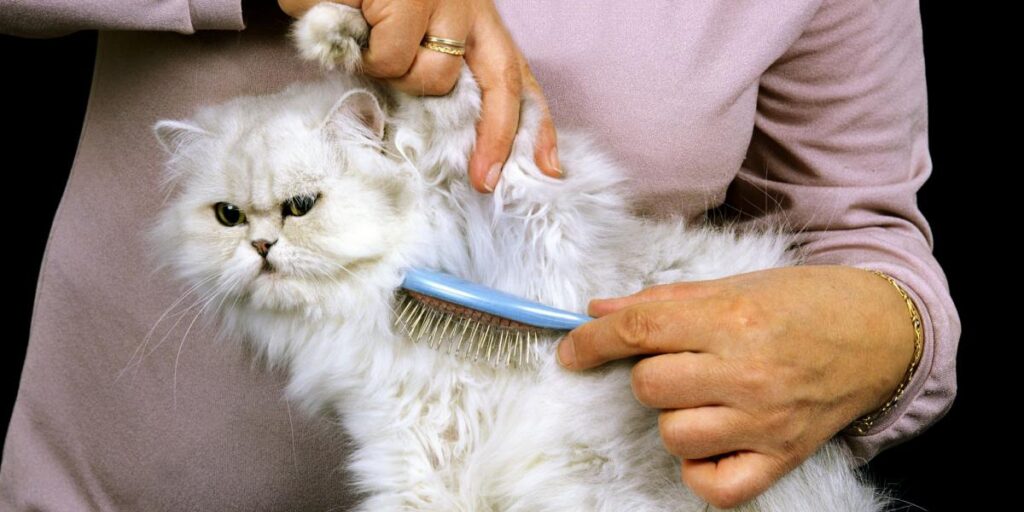
The Importance of Brushing Your Persian Cat’s Coat
When it comes to taking care of your Persian cat, one important aspect to focus on is their coat. Brushing your Persian cat’s coat regularly is crucial for maintaining their overall health and well-being. Not only does it help to keep their fur looking beautiful, but it also prevents mats and tangles, reduces shedding and hairballs, and promotes bonding and relaxation between you and your furry friend.
Keeping your Persian cat’s coat healthy
Persian cats are known for their long and luxurious coats, which require regular grooming to keep them healthy. Brushing your Persian cat’s coat helps to distribute the natural oils produced by their skin throughout their fur, which keeps it moisturized and shiny. It also helps to prevent the fur from becoming dry and brittle, which can lead to tangling and matting.
Preventing mats and tangles
Mats and tangles can be a common issue for Persian cats due to the length and thickness of their fur. Regular brushing helps to prevent mats from forming by removing any loose hairs and preventing them from tangling with the existing fur. By gently brushing through your cat’s coat, you can detangle any knots and prevent them from becoming larger and more difficult to remove in the future.
Reduces shedding and hairballs
Persian cats are notorious for their shedding, and if not properly managed, it can lead to hairballs and excess fur throughout the house. Brushing your Persian cat’s coat helps to remove loose hairs and reduces the amount of fur they shed. This not only keeps your home cleaner but also helps to prevent your cat from ingesting excessive amounts of fur while grooming themselves, which can lead to hairballs.
Promoting bonding and relaxation
Brushing your Persian cat’s coat is not only important for their physical well-being but also for their emotional well-being. The act of brushing creates a bonding experience between you and your cat, as it allows for moments of closeness and gentle touch. Many Persian cats enjoy the sensation of being brushed and find it relaxing, which can help to reduce stress and anxiety.
Choosing the Right Brush for Your Persian Cat
When it comes to choosing the right brush for your Persian cat, it’s important to consider their unique coat texture and grooming needs. Persian cats have a thick double coat that requires special attention and care. Understanding the different types of brushes available and their benefits can make the grooming process more effective and enjoyable for both you and your cat.
Understanding Persian cat’s coat texture
Persian cats have long, fine, and dense fur, which requires regular brushing to prevent matting. Their coat consists of a soft, fluffy undercoat and a longer, silkier topcoat. The undercoat helps to insulate the cat and keep them warm, while the topcoat provides protection from the elements. It’s essential to choose a brush that can effectively reach both layers of their coat without causing any discomfort or pain.
Different types of brushes and their benefits
There are several types of brushes available for grooming Persian cats, each with its own set of benefits. Understanding the purpose and functionality of these brushes can help you choose the most suitable one for your cat’s specific needs.
Bristle brushes
Bristle brushes are a common choice for Persian cats. They have a flat head with densely packed natural or synthetic bristles that can effectively remove loose hair and stimulate the skin. Bristle brushes are gentle on the coat and are particularly effective at distributing the natural oils produced by the skin throughout the fur, promoting a healthy and shiny coat.
Slicker brushes
Slicker brushes have fine, short wires close together on a flat or slightly curved surface. They are designed to remove loose hair and prevent matting by reaching deep into the coat. Slicker brushes are effective at detangling knots and removing debris, but they should be used with caution to avoid causing any discomfort or scratching the skin.
Combination brushes
Combination brushes, as the name suggests, combine the features of both bristle and slicker brushes. They usually have two sides, with bristles on one side and fine, short wires on the other. Combination brushes are versatile and can be used for general grooming, including removing loose hairs, detangling knots, and fluffing up the coat.
Preparing Your Persian Cat for Brushing
Before you start brushing your Persian cat’s coat, it’s important to create a calm and comfortable environment for both you and your furry friend. Introducing brushing at an early age and desensitizing your cat to the brush can help make the grooming process more pleasant. Using treats and positive reinforcement can also make the experience enjoyable for both of you.
Creating a calm and comfortable environment
Find a quiet and comfortable space where you can groom your Persian cat without distractions. Make sure the area is well-lit so you can see any tangles or mats in their fur. Consider placing a soft towel or mat on a table or your lap to provide a comfortable surface for your cat to sit or lie on during the grooming session.
Introducing brushing at an early age
To make brushing a positive experience for your Persian cat, it’s best to start introducing them to the grooming process at an early age. This helps them become familiar with the sensation of being brushed and establishes a routine they can get used to. Gradually increase the duration of brushing sessions as your cat becomes more comfortable with the process.
Desensitizing your cat to the brush
Some cats may be initially apprehensive or resistant to being brushed. Desensitizing them to the brush can help alleviate any fears or anxieties they may have. Start by allowing them to sniff and inspect the brush while rewarding them with treats and praise. Gradually begin gently stroking their fur with the brush, gradually increasing the pressure and duration over time.
Using treats and positive reinforcement
Using treats and positive reinforcement can go a long way in making the brushing experience positive for your Persian cat. Reward them with small treats or praise them whenever they exhibit calm behavior during the grooming process. This helps to create a positive association with brushing and makes your cat more willing to participate in future grooming sessions.
Step-by-Step Guide to Brushing Your Persian Cat’s Coat
Now that you’ve chosen the right brush for your Persian cat and prepared them for the grooming session, it’s time to start brushing their coat. Follow this step-by-step guide to ensure a thorough and effective grooming experience for both you and your furry friend.
Choosing the right time
Pick a time when your Persian cat is relaxed and in a calm mood. Avoid brushing immediately after a meal or when they are feeling playful or agitated. It’s best to choose a time when your cat is more likely to be in a restful state, such as after a nap or in the evening when they are winding down.
Gently removing any tangles or mats
Before you start brushing your cat’s entire coat, it’s important to gently remove any tangles or mats that may be present. Use your fingers or a comb to carefully separate the fur and detangle any knots. Be patient and gentle, taking care not to pull or tug on the mats, as this can cause discomfort or pain to your cat.
Brushing in the direction of hair growth
When it’s time to start brushing, always brush in the direction of hair growth to avoid causing any discomfort or pulling on the fur. Start at the neck and work your way down to the tail, using long, sweeping motions. Be thorough and systematic, ensuring that you brush all areas of your cat’s body, including the chest, sides, belly, and legs.
Taking breaks and giving your cat a break
Brushing a Persian cat’s coat can be a time-consuming process, so it’s important to take breaks if needed. Pay attention to your cat’s behavior and body language. If they become restless or show signs of discomfort or distress, take a break and give them some time to relax. Patience is key when it comes to grooming your cat, so don’t rush the process.
Brushing the undercoat
Don’t forget to pay attention to your Persian cat’s undercoat. Use a brush designed specifically for the undercoat, such as a wide-toothed comb or a slicker brush, to gently remove any loose hair and prevent matting. Be extra careful when brushing around sensitive areas, such as the belly, armpits, and groin.
Don’t forget the tail and ears
The tail and ears are often overlooked when it comes to brushing, but they require regular attention as well. Use a soft brush or your fingers to gently brush through your cat’s tail, removing any loose hair and preventing tangling. For the ears, use a soft-bristled brush or a damp cloth to gently wipe away any dirt or debris.
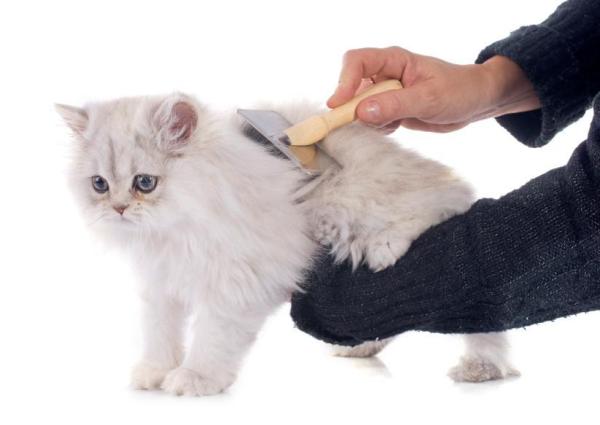
Dealing with Mats and Tangles
Despite your best efforts, mats and tangles may still occur in your Persian cat’s coat. It’s important to identify and address them promptly to prevent further matting and discomfort for your cat. There are several techniques and tools you can use to deal with mats and tangles effectively.
Identifying and addressing mats
Regular brushing helps to prevent mats from forming, but occasionally, they may still appear. Mats are clumps of tangled fur that can become tight and uncomfortable for your cat. Look for areas of your cat’s coat where the fur feels clumped or matted together. Use your fingers or a mat splitter to gently separate the hairs and detangle the mat. Take your time and be patient to avoid causing any pain to your cat.
Using detangling sprays or conditioners
Detangling sprays or conditioners can be useful tools when dealing with mats and tangles. These products help to lubricate the fur, making it easier to comb through and detangle. Spritz a small amount of detangling spray onto the mat or tangle and gently work through it with your fingers or a comb. Be careful not to use too much product, as it can make the fur greasy or weigh it down.
Using a mat splitter or scissors as a last resort
If mats or tangles are too severe and cannot be detangled by hand, a mat splitter or scissors may be necessary. A mat splitter is a small tool with sharp blades that can cut through the mat and loosen it without harming the cat’s skin. Scissors should only be used as a last resort and with extreme caution, as they pose a higher risk of accidentally cutting your cat’s skin. If you’re unsure or uncomfortable with using scissors, it’s best to seek professional help.
Seeking professional help if necessary
If you’re unable to effectively remove mats or tangles from your Persian cat’s coat, it’s best to seek professional help. Professional groomers have the knowledge, experience, and specialized tools to handle difficult mats and tangles safely. They can also provide guidance on how to prevent and manage mats in the future.
Recommended Brushing Frequency for Persian Cats
The frequency of brushing your Persian cat’s coat depends on their specific coat length and type. Establishing a regular brushing routine is essential for maintaining a healthy and tangle-free coat. Here are some general guidelines to follow:
Daily brushing for long-haired Persians
Long-haired Persian cats require daily brushing to keep their coats in optimal condition. Their fur is more prone to matting and tangling, so regular grooming is necessary to prevent these issues from occurring. Set aside dedicated time each day to brush your long-haired Persian cat, focusing on removing any tangles and loose hairs.
Every few days for medium-haired Persians
Medium-haired Persian cats have slightly shorter coats than their long-haired counterparts, but they still require regular grooming to prevent matting. Brushing your medium-haired Persian cat every few days is usually sufficient to keep their coats in good condition. Pay close attention to areas prone to tangling, such as the armpits, belly, and tail.
Weekly brushing for short-haired Persians
Short-haired Persian cats have coats that are generally easier to maintain compared to their long-haired and medium-haired counterparts. However, they still benefit from regular brushing to remove loose hairs and stimulate the skin. Brushing your short-haired Persian cat once a week is usually sufficient to keep their coats looking healthy and shiny.
Adjusting frequency based on shedding season
Persian cats, regardless of their coat length, experience seasonal shedding. During shedding seasons, such as spring and fall, you may need to adjust the frequency of brushing to accommodate the increased amount of loose hair. Brushing more frequently during these periods helps to minimize shedding and keep your home cleaner.

Additional Care Tips for Your Persian Cat’s Coat
In addition to regular brushing, there are several other care tips you can follow to maintain your Persian cat’s coat health and appearance.
Regular bathing and drying
While Persian cats are generally clean animals that groom themselves, regular baths can help to keep their coats in top condition. Use a gentle cat-specific shampoo and lukewarm water to bathe your Persian cat, making sure to rinse thoroughly to remove any residue. After bathing, make sure to dry your cat completely, especially their coat, to prevent moisture from leading to skin irritations or matting.
Trimming nails to avoid snags
Long nails can snag on your Persian cat’s fur, causing discomfort or even tearing the fur. Regular nail trims help to prevent this issue and keep your cat’s nails at a manageable length. Invest in a pair of cat nail clippers and carefully trim the tips of your cat’s nails. If you’re unsure about trimming nails yourself, consult with a professional groomer or veterinarian.
Cleaning the ears and eyes
Persian cats are prone to eye discharge and earwax buildup due to their facial structure. Regularly check your cat’s eyes for any signs of discharge and gently clean them with a damp, soft cloth or a cotton pad. Similarly, check your cat’s ears for any signs of wax buildup or infection and clean them with a veterinarian-recommended ear cleaner. Be gentle and avoid inserting anything into the ear canal.
Maintaining a healthy diet for coat health
A nutritionally balanced diet plays a crucial role in maintaining the health and appearance of your Persian cat’s coat. Feed your cat high-quality cat food that is specifically formulated for their age and needs. Look for food options that contain essential fatty acids, such as omega-3 and omega-6, which help to promote a healthy and shiny coat. Consult with your veterinarian to determine the best diet for your Persian cat.
Common Challenges in Brushing a Persian Cat
Brushing a Persian cat’s coat can come with its fair share of challenges, but with patience and the right approach, these challenges can be overcome.
Resistance or fear of brushing
Some cats may resist or show fear when it comes to brushing their coat. This can be due to various reasons, such as past negative experiences or sensitivity to certain brushing techniques. If your Persian cat displays resistance or fear, it’s important to approach grooming sessions with patience and understanding. Try using a softer brush or a grooming glove, and gradually build their trust and comfort over time.
Dealing with sensitive or painful areas
Certain areas of your Persian cat’s body, such as the belly or tail, may be more sensitive or painful to touch. In these cases, it’s important to approach grooming sessions with extra care and gentleness. Use a softer brush or your fingers to brush through these areas, and be mindful of your cat’s reactions. If your cat consistently shows signs of discomfort or pain in specific areas, consult with a veterinarian to rule out any underlying health issues.
Handling excessive shedding
Persian cats are known for their excessive shedding, especially during certain seasons. While regular brushing helps to reduce shedding, it may not completely eliminate the problem. Investing in a high-quality pet hair vacuum or lint roller can help to keep your home clean from loose fur. Additionally, consider using shedding control products, such as specialized shampoos or supplements, to help minimize shedding.
Addressing skin conditions or allergies
Some Persian cats may be prone to skin conditions or allergies that can impact the health and appearance of their coat. If you notice any changes in your cat’s skin or coat, such as excessive dryness, redness, or itchiness, it’s important to seek veterinary attention. Your veterinarian can diagnose and treat any underlying skin issues and provide guidance on how to manage them.
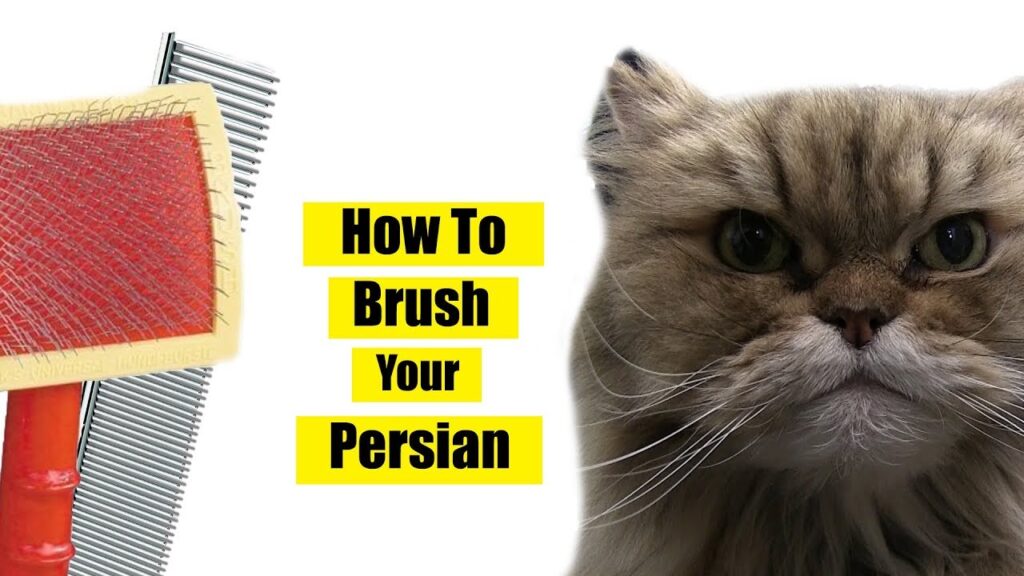
Professional Grooming for Persian Cats
While regular brushing and grooming at home are essential for maintaining your Persian cat’s coat, there may come a time when professional grooming is necessary or beneficial.
When to consider professional grooming
Professional grooming for Persian cats can be beneficial in several situations. If your cat has severe matting or tangles that you’re unable to address at home, a professional groomer can handle the task safely and efficiently. Additionally, if you’re unsure about how to properly groom your Persian cat or if they have specific grooming needs, seeking professional help can ensure that their coat is maintained correctly.
Finding a reputable groomer
When selecting a professional groomer for your Persian cat, it’s important to do your research and find someone who specializes in grooming long-haired cats. Ask for recommendations from other cat owners or your veterinarian. Look for groomers who have experience with Persian cats and have a good reputation for providing gentle and quality grooming services.
What to expect during a grooming session
During a professional grooming session, your Persian cat will receive a thorough grooming experience, including brushing, bathing, drying, and trimming if necessary. The groomer will be equipped with specialized tools and products to handle your cat’s unique coat and grooming needs. They will also be experienced in handling cats and ensuring their comfort and safety throughout the session.
Maintaining a grooming schedule
After your Persian cat has been professionally groomed, it’s important to maintain a regular grooming schedule to prevent matting and maintain their coat health. Work with the groomer to determine the recommended frequency for grooming appointments based on your cat’s specific coat type and needs. Regular professional grooming, combined with at-home grooming, will help to keep your Persian cat looking and feeling their best.
Conclusion
Regularly brushing your Persian cat’s coat is not only important for their physical health but also for strengthening your bond with them. By choosing the right brush, creating a calm environment, and following a step-by-step guide, you can ensure that your Persian cat’s coat stays healthy and beautiful. Don’t forget to address any mats or tangles, adjust the brushing frequency based on your cat’s needs, and consider seeking professional grooming when necessary. With proper care and attention, you can ensure that your Persian cat enjoys a long and happy life with a gorgeous coat that will make heads turn.
